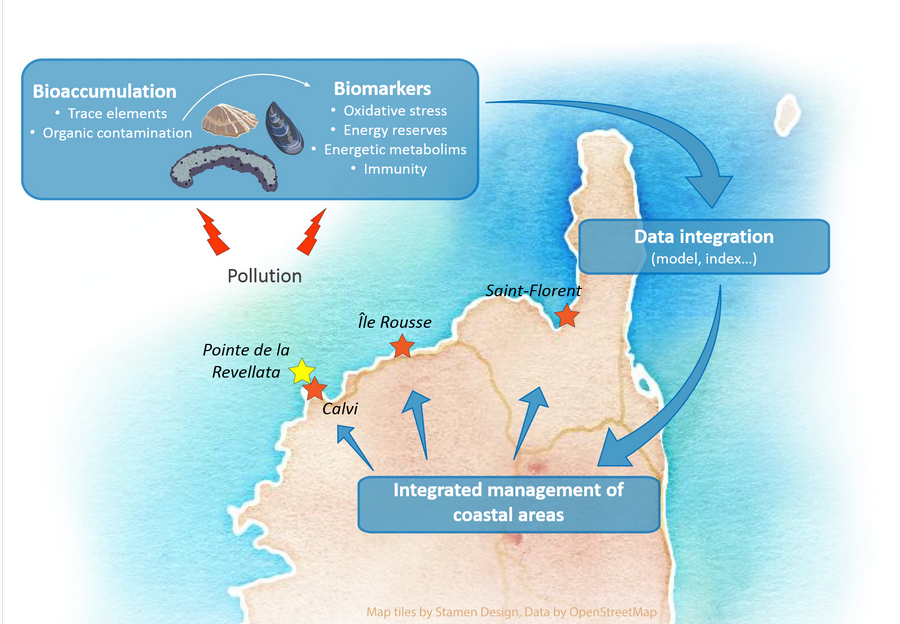The coastal zones are complex environments, in constant evolution between the terrestrial and marine ecosystems. The connection between these two systems is made through hydrosystems which generate unidirectional flows from continental watersheds to coastal basins. Coastal waters inhabit 90% of marine biodiversity, but they also are the first affected by human activities. The overexploitation of biological resources, accidental pollution linked to port and industrial infrastructures and to increasing maritime traffic, the eutrophication of coastal waters caused by intensive agricultural practices lead to significant degradation of coastal habitats and represent a threat to the functioning of the whole system.
In this context, monitoring the contamination is essential in order to assess the effects of pollution and to propose measures for the high contaminants concentrations found in some places. The European Marine Strategy Framework Directive (EMSFD) aims to achieve or maintain good ecological status in marine waters. The member states establish a Marine Environment Action Plan, divided into 5 objectives. To assess whether or not the quality of the environment has been reached, the EMSFD encourages biomonitoring in coastal environments, using existing surveillance systems and networks. In addition, some study sites of QUAMPO project are located near a Marine Protected Area and within the perimeter of the Parc Naturel Marin du Cap Corse et de l’Agriate, whose management plan is under writting.

